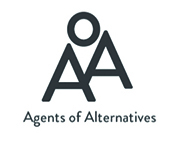We are interested in renegotiating the ways in which design is being framed and practised. By interrogating the power structures behind and critically reflecting on our own positions within this debate, we aim to establish and promote a new understanding of design and its potential political agency. Political with a small ‘p’, political regarding the contingent condition of our civic societies.
Design is commonly understood and formulated as a discipline concerned with aesthetics, form, and problem-solving. With the complex crises the world is facing these days, new directions and scopes have emerged in the discipline of design over the last decade: from participatory design to co-design, user-centered design to service design, critical design to design activism, open design to social design/design for social innovation and design for sustainability transition – just to name a few. What all of these directions have in common is a move away from the designer as sole author towards designer as co-author, co-creator, and co-producer. Here design intentions are motivated by complex social, political, or environmental issues. Designers have become problem-finders, facilitators, moderators, experimenters, and ‘mid-wives’, mediating between different stakeholders, interests, and disciplines, in order to assist (co-)design processes and outcomes with a growing set of tools and methods.
All of these new approaches and roles open up a range of yet unanswered questions: what are the power structures, privileges and dependencies behind these new relationships – between user, designer, client, and other stakeholders – and how do they enable those involved? How do they affect the effectiveness of behavioural and transition change, and how is the political agency of design levered? What emerging strategies and tactics can be mobilised to expand what design can do? And, in particular, WHO designs for WHOM: what if, for example, a group of “non-experts” motivated by the need to re-design their existing realities enables their own design? What is the role of the expert designer then? What are the new skills and knowledges necessary to inform the practices of these ‘new’ design agents, expert and non-expert alike? How can such practices be sustained? And how can we learn from each other in mutual ways and build each other’s agency?
Through our reflective practice and practice-led research projects, we aim to establish a dialogue between design practitioners, educators, researchers, students, activists, citizen, policy-makers, municipalities, and other stakeholders concerned with positive societal change, to fathom new fields of possibilities for everyone involved. Finally, our design approach is emergent and will keep evolving with new insights and understandings through our research and practice.
